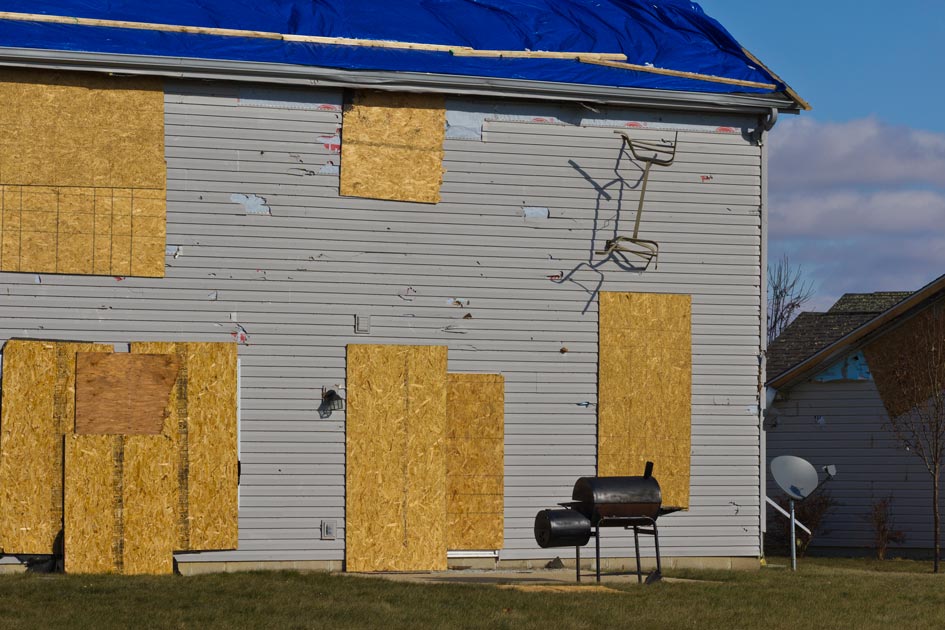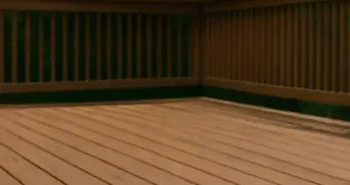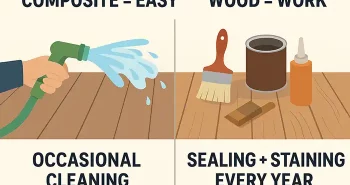Quick Overview: How to Deal with Storm-Damaged Siding
Storms can cause cracks, warping, and missing siding that lead to leaks, mold, and costly repairs. Acting quickly is the best way to protect your home.
- Inspect & Document: Walk around your home, take photos, and note storm details for insurance.
- Get a Professional Inspection: Contractors can spot hidden damage homeowners often miss.
- Contact Insurance: File your claim quickly and know what’s covered.
- Repair or Replace: Small issues can be fixed, but widespread or repeated damage often means replacement.
- Prevent Future Issues: Maintain siding, trim trees, and secure outdoor items before storms.
With expert help from First Star Exteriors, you can restore your siding, protect your home, and reduce stress after a storm.
Storms can leave behind more than just fallen branches and puddles in your yard. High winds, heavy rain, hail, and flying debris often cause serious damage to siding — one of the most important protective layers of your home. Cracked, warped, or missing siding can lead to water infiltration, mold growth, or costly structural repairs if not addressed quickly.
The good news is that there are clear steps you can take to protect your home after a storm. This guide walks you through how to assess damage, work with insurance, decide between repairs and replacement, and prevent future issues.
5 Steps to Deal with Siding Damage After a Storm
1. Assess the Damage
Once the storm passes and it’s safe to go outside, walk around your home and visually inspect the siding. Look for cracks, holes, warping, or entire panels that may have been pulled loose by high winds.
It’s important to document everything right away. Take clear photos from multiple angles and note the date and details of the storm. This documentation will help later if you decide to file an insurance claim. To prepare for future storms, follow these maintenance tips to keep your home’s exterior in good shape. For more guidance, FEMA provides a helpful overview of how to safely inspect your home after a disaster.
2. Undergo a Professional Inspection
Not all storm damage is easy to see. While you might spot cracks or missing panels, hidden damage behind the siding is often missed by homeowners. Moisture intrusion, soft spots, or small gaps can worsen quickly if left untreated.A professional siding contractor can provide a detailed inspection, uncover hidden issues, and give you an accurate estimate for repairs or replacement. At First Star Exteriors, our team inspects siding thoroughly and recommends the most cost-effective long-term solution. You can also follow our guide to siding maintenance to know when to schedule inspections and upkeep.
3. Speak to Your Insurance Provider
If the damage is significant, contact your insurance company promptly. Provide them with the photos and notes you collected, and ask about what your policy covers.
Most homeowner policies cover storm damage, but the amount varies. Ask your provider about:
- Your deductible.
- Whether full replacement is covered or only repairs.
- How quickly an adjuster can visit your property.
The Homeowners Insurance Basics guide from the Insurance Information Institute provides a public overview of perils typically covered—such as wind, hail, fire, and lightning—and what’s usually excluded. This makes it even more important to have a professional siding contractor present during the adjuster’s visit to ensure all damage is documented correctly.
4. Get Siding Repairs as Soon as Possible
Even small cracks or loose panels can let in moisture, leading to rot, mold, and insulation problems. Temporary fixes like covering holes with waterproof tape or securing loose panels with fasteners can help in the short term, but they’re not long-term solutions.
Schedule repairs quickly to prevent additional damage. Professional repairs restore siding strength and weather resistance, giving your home the protection it needs until the next storm.
5. Replace Siding if Beyond Repair
Sometimes siding damage is too extensive to fix with small repairs. If your siding is old, has multiple problem areas, or has been patched repeatedly over the years, replacement may be the smarter investment.New siding offers decades of durability, improved energy efficiency, and fresh curb appeal. At First Star Exteriors, we work with a variety of siding materials — vinyl, pine and cedar, fiber-cement, metal, brick, and stucco — to give homeowners options that match both budget and style. If you’re planning a full replacement, our guide on the best siding for your home can help you compare options.
Common Types of Storm Damage
Storms don’t all cause the same kind of damage. Here are the most common issues homeowners face:
- Hail damage → Dents, chips, and holes in vinyl or aluminum siding.
- Wind damage → Panels ripped off or pulled loose.
- Water damage → Warping, swelling, or hidden leaks behind siding.
- Debris impact → Cracks or punctures from branches, lawn furniture, or flying objects.
According to the National Association of Home Builders, siding and roofing are among the most commonly damaged exterior features during storms. Recognizing the type of damage helps you understand whether quick repairs will work or if replacement is necessary.
Temporary Fixes to Prevent Further Issues
If a contractor can’t get to your home right away, there are short-term steps you can take to minimize damage:
- Reattach loose panels with nails or screws to prevent further tearing.
- Cover small cracks or holes with exterior-grade tape or sealant.
- Place a tarp over severely damaged areas if water is getting inside.
Remember, these are only temporary measures. Permanent repair or replacement should always follow as soon as possible.
Other Areas to Look for Damage
Storms rarely damage just one part of your home. While inspecting siding, also check:
- Roof shingles for missing or cracked pieces.
- Gutters for dents or clogs from debris.
- Windows and doors for broken seals, cracks, or leaks.
- Foundation for signs of water pooling.
Addressing all affected areas ensures your home remains secure and prevents problems from spreading.
Preventing Future Siding Damage
While no siding can withstand every storm, some steps can reduce your risk:
- Choose durable materials → Fiber-cement and engineered wood resist impact better than older wood or thin vinyl.
- Maintain siding regularly → Cleaning, painting, and sealing extend siding life.
- Trim nearby trees → Prevents branches from falling on siding.
- Secure outdoor items → Patio furniture, grills, and decorations can become dangerous projectiles in high winds.
For broader prep beyond siding, NAHB’s homeowner guide on protecting your home from severe weather covers sealing openings, storm shutters, and more. Proactive care lowers the chances of storm damage and keeps your home looking sharp year-round.
Work with a Professional Contractor
Storm damage can be stressful, but you don’t have to deal with it alone. Professional contractors provide expert inspections, accurate repair estimates, and guidance through the insurance process.
At First Star Exteriors, we specialize in repairing and replacing storm-damaged siding. With experience across all major materials — vinyl, cedar, fiber-cement, metal, brick, and stucco — we give homeowners clear options and peace of mind. Our team is committed to protecting your home and restoring its beauty quickly and effectively.
Storm-damaged siding should never be ignored. Acting quickly to assess, document, and repair damage protects your home from more costly issues down the road. Insurance can cover much of the expense, but having a professional contractor by your side ensures the process goes smoothly.
Conclusion
Whether your siding needs simple repairs or a full replacement, First Star Exteriors is here to help. Our experts provide thorough inspections, honest recommendations, and high-quality installation to keep your home safe and looking its best. For timing your project, see our guide on the best time of year for a siding installation. Contact us today to schedule your storm-damage siding inspection and restore your peace of mind.





